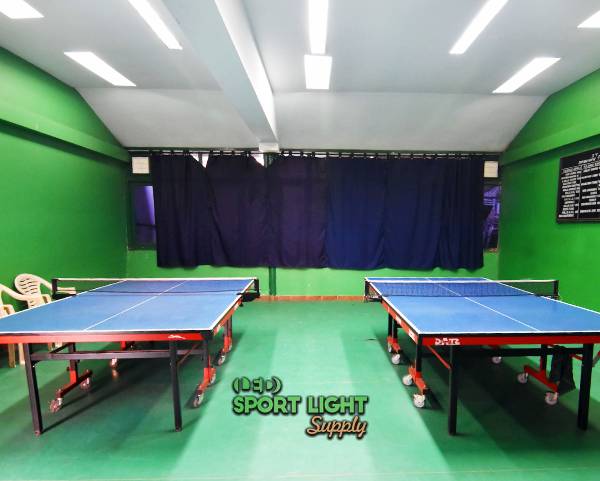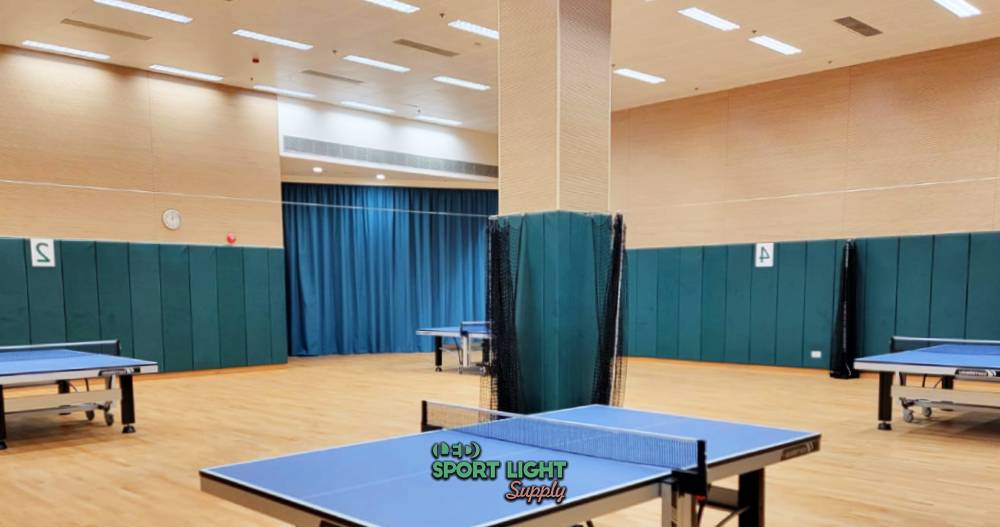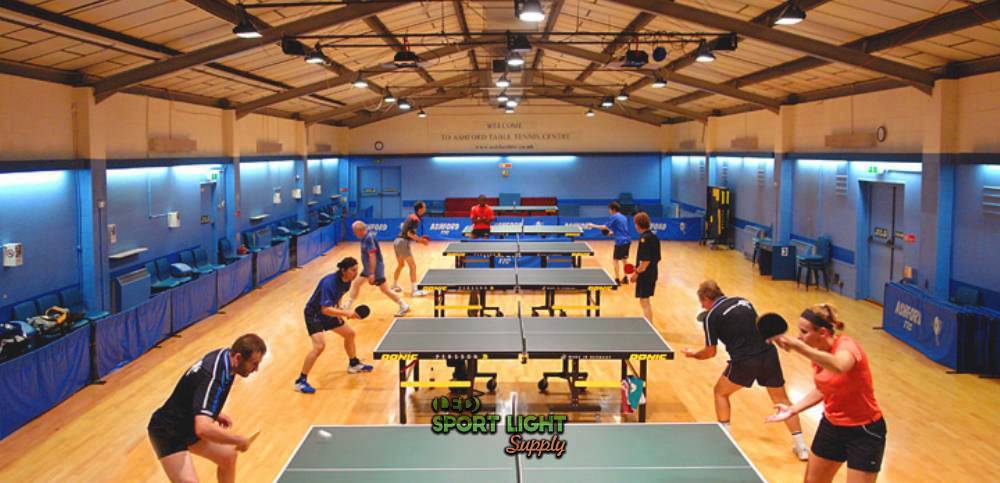The design and setup of a table tennis room extend beyond choosing the right table, paddles, and balls. One of the most vital components to consider is the lighting. The right lighting can directly impact the quality of play, player performance, and overall atmosphere of the room. With careful consideration of lighting types, specifications, and budget, the ideal setup can be achieved.
| Expense Category | Description | Estimated Cost (USD) |
|---|---|---|
| Room Size (Square Feet) | Example: 400 sq ft (20 x 20 ft room) | – |
| Number of Lights Needed | Generally, 4-6 overhead lights for adequate brightness | – |
| Lighting Fixtures (LED) | LED panels or tubes for energy-efficient lighting (e.g., 4x 40W panels) | $100 – $200 per fixture |
| Total Lighting Fixture Cost | For 5 fixtures | $500 – $1000 |
| Installation Labor | Professional electrician fees for installing lights | $150 – $300 |
| Wiring & Circuit Upgrades | If necessary, upgrading wiring or circuit breakers | $50 – $200 |
| Energy Costs | Estimated monthly electricity cost for running 200W of lighting (average) | $10 – $20/month |
| Maintenance & Replacement | Bulb replacement, fixture maintenance per year | $50 – $100 annually |
| Dimmer/Control Systems | Optional lighting controls for brightness adjustments | $50 – $150 |
| Total Initial Setup Cost | Fixtures, installation, and setup cost | $700 – $1,500 |
| Annual Operating Cost | Electricity, maintenance, and bulb replacement (excluding installation) | $150 – $300 annually |
Table of Contents
ToggleSeveral factors influence the cost of lighting a table tennis room. These include the size of the room, the type and quality of lighting selected, and the energy efficiency of the fixtures. Understanding these factors can help create a more accurate budget for lighting expenses.
 The size of the table tennis room plays a large role in determining the number of lights needed to achieve the right brightness and uniformity. Larger rooms will require more fixtures or higher wattage bulbs to provide adequate illumination. The layout of the room is also important, as features such as high ceilings or an irregular shape may require additional considerations when installing lights.
The size of the table tennis room plays a large role in determining the number of lights needed to achieve the right brightness and uniformity. Larger rooms will require more fixtures or higher wattage bulbs to provide adequate illumination. The layout of the room is also important, as features such as high ceilings or an irregular shape may require additional considerations when installing lights.
For example, a room with a high ceiling may need specialized fixtures like track lighting or hanging pendants to ensure the light reaches the playing surface. In contrast, a room with a lower ceiling might be adequately lit with flush-mounted overhead lights. The complexity of the room’s layout can increase installation costs due to the need for more customized solutions.
The type of lighting selected for the table tennis room directly impacts the budget. LED lights, although more expensive initially, have a longer lifespan and are more energy-efficient than traditional halogen or fluorescent bulbs. Over time, LEDs help reduce electricity bills, making them a cost-effective long-term choice.
However, there are many different qualities of LED lighting on the market. High-quality LEDs can provide more consistent brightness and better color rendering, improving the overall experience. On the other hand, lower-quality LEDs may flicker or have a shorter lifespan, necessitating more frequent replacements. Choosing higher-quality lights may raise the upfront cost, but it could lead to savings in maintenance and energy consumption in the long run.
Energy efficiency is another key factor influencing lighting costs. While LED lights are more energy-efficient than traditional options, the wattage and type of LED bulbs chosen will determine the total energy consumption. For example, an LED bulb that consumes 15 watts can produce the same amount of light as a 60-watt incandescent bulb. Over the course of a year, this difference in wattage can result in significant savings on electricity bills.
It’s also important to consider the long-term energy savings when budgeting for lighting. Higher initial costs for energy-efficient lighting solutions like LEDs or smart lighting systems may be offset by lower energy consumption and fewer bulb replacements. Energy-efficient lighting reduces the environmental impact of the room, aligning with sustainable practices while keeping long-term costs down.
The cost of installing lighting in a table tennis room includes both the price of the fixtures and the labor required to install them. Installation costs can vary depending on the complexity of the lighting setup and whether professional help is needed.

For those on a tight budget, installing lighting fixtures yourself can save a significant amount of money. DIY installation is often feasible for simple lighting setups, such as replacing bulbs or installing basic ceiling fixtures. However, more complex tasks like installing track lighting or recessed lighting may require professional expertise.
Hiring a licensed electrician is recommended for these more complicated setups, as they ensure the lights are installed safely and correctly. While professional installation may increase initial expenses, it guarantees the lighting system operates at its best, without any wiring issues or safety risks.
The cost of mounting fixtures and running the necessary wiring can add to the total installation expenses. The ceiling type plays a role in determining how easily lights can be mounted. For example, a drop ceiling may require special hardware for fixture installation, while a concrete ceiling may need drilling or other advanced techniques.
The amount of wiring needed also depends on the layout of the room. Rooms with multiple light sources or complex configurations will require additional wiring, which increases labor and materials costs. It’s important to factor in these costs when planning the lighting installation to avoid surprises during the process.
Once the lights are installed, ongoing maintenance and occasional replacements are part of the long-term costs of lighting a table tennis room. The type of light chosen can impact how often replacements are needed and the costs associated with upkeep.
LED lights have a significantly longer lifespan than halogen or incandescent bulbs. LED bulbs typically last between 25,000 and 50,000 hours, while halogen bulbs may only last 2,000 to 3,000 hours. As a result, the maintenance costs for LED lighting are considerably lower, as they don’t need to be replaced as frequently.
However, the initial cost of high-quality LEDs is higher than other types of bulbs, which can be a barrier for some budgets. Although the upfront cost is higher, the long lifespan of LEDs makes them more economical over time, with fewer replacements required. Replacing bulbs in high-ceiling rooms may also require specialized equipment, adding to maintenance costs.
To maintain the quality of the lighting and ensure maximum brightness, regular cleaning of the fixtures is required. Dust and grime can accumulate on the light sources, reducing their efficiency and overall output. Depending on the type of fixture, cleaning can involve removing and wiping down the lights, cleaning the glass, or adjusting the positioning of the bulbs.
For complex lighting setups, such as recessed lighting or track lighting, cleaning may require professional assistance, especially if the lights are mounted at a high altitude. This maintenance expense should be factored into the overall budget to keep the lighting system functioning properly over time.

Proper budgeting is necessary to ensure the table tennis room is equipped with the appropriate lighting within financial constraints. By understanding the various expenses related to lighting, it becomes easier to allocate funds for installation, energy consumption, and long-term upkeep.
When creating a budget for lighting, it’s essential to account for both upfront installation costs and ongoing energy expenses. The initial cost will depend on the quality of fixtures selected and whether professional installation is required. After installation, energy bills will fluctuate based on the wattage of the bulbs and how often the lights are used.
To calculate total lighting expenses, it’s helpful to estimate the annual electricity consumption of the lighting system. For instance, an LED light that consumes 15 watts will use 0.015 kWh per hour. If used for 5 hours a day, this would result in a monthly consumption of 2.25 kWh, with the associated cost depending on local electricity rates. By projecting these costs over a period of several years, a comprehensive financial plan can be created.
Lighting expenses do not end after installation. The long-term cost of ownership should also be considered. Over the course of 5-10 years, maintenance costs, energy bills, and bulb replacements can add up. However, with proper energy-efficient choices and well-maintained systems, these costs can be minimized.
In terms of financial planning, it’s wise to consider any potential upgrades or changes in lighting technology that could affect the room in the future. Investing in more energy-efficient fixtures now can reduce expenses down the road, making the lighting system more cost-effective overall.
A well-lit table tennis room enhances the playing experience and contributes to the atmosphere of the space. Proper lighting ensures clear visibility, better performance, and a comfortable environment for players. By carefully considering the various lighting types, specifications, and costs, an efficient and functional lighting system can be designed within a reasonable budget. Balancing upfront installation costs with long-term savings through energy efficiency and reduced maintenance ensures that the room remains well-lit and functional for years to come.
Drop us a line to receive a free lighting design